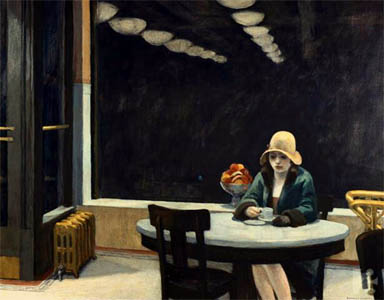Facts About Automat
Edward Hopper's 1927 painting "Automat" captures a poignant moment: a woman seated alone in a restaurant at night, gazing into her coffee cup. The woman, modeled after Hopper's wife Jo but altered to appear younger and slimmer, exudes an air of mystery. Her circumstances and emotions are left to the viewer's imagination, enhancing the theme of urban isolation.
Hopper skillfully employs lighting and composition to draw our attention to the woman, making her the focal point of the scene. The automat, a popular dining venue for working women in the 1920s, adds depth to the narrative behind the painting. The large window behind the woman, a recurring motif in Hopper's work, frames her figure and accentuates the sense of solitude and introspection.
The painting's meticulous details—the restaurant setting, the woman’s contemplative pose, and the absence of other distractions—craft a powerful and reflective mood. Hopper's masterful use of light, composition, and ambiguous storytelling has established "Automat" as a significant piece in his oeuvre. It continues to captivate critics and viewers alike, inviting endless interpretations and discussions.

 Canada
Canada